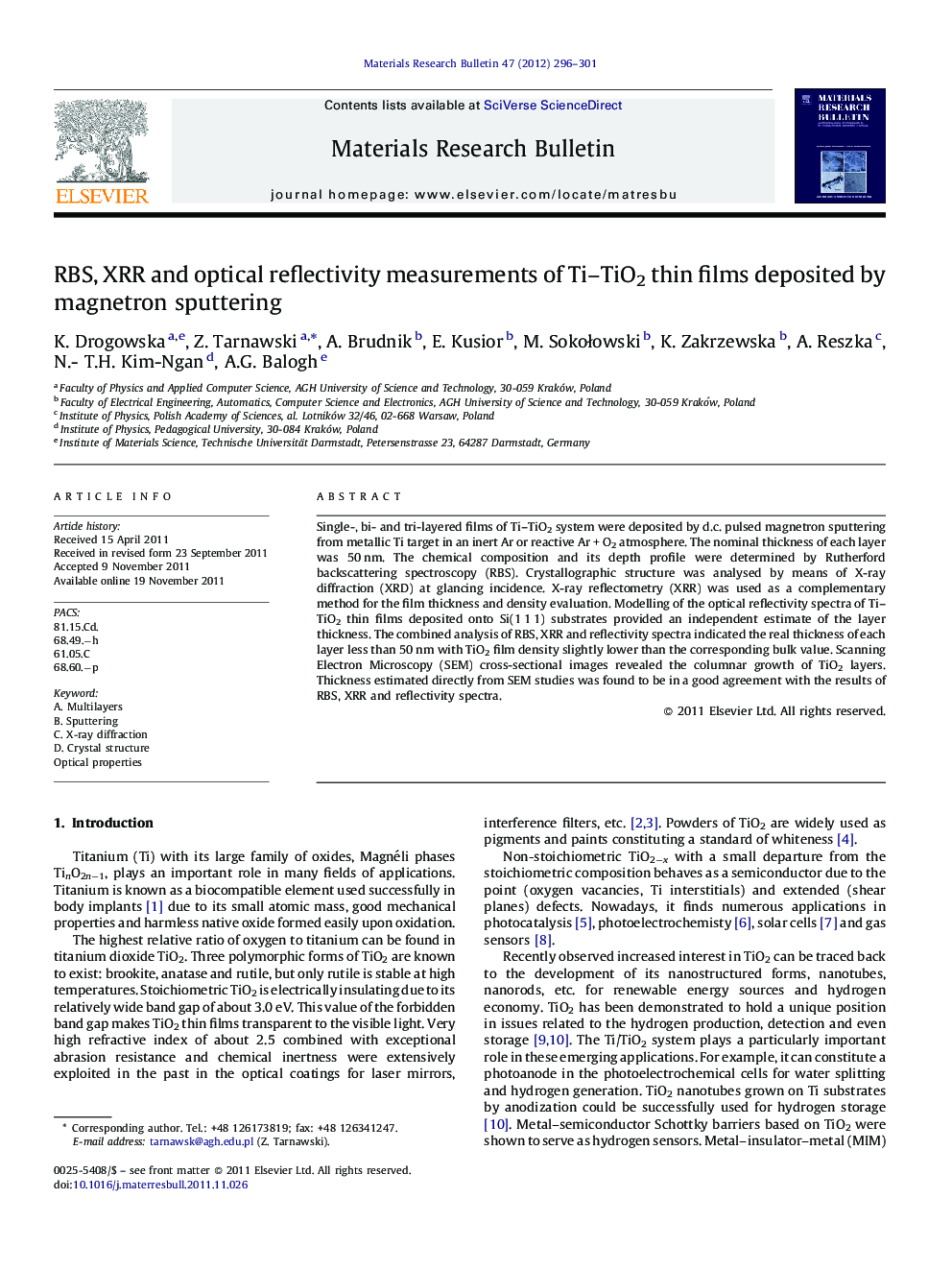| Article ID | Journal | Published Year | Pages | File Type |
|---|---|---|---|---|
| 1490622 | Materials Research Bulletin | 2012 | 6 Pages |
Single-, bi- and tri-layered films of Ti–TiO2 system were deposited by d.c. pulsed magnetron sputtering from metallic Ti target in an inert Ar or reactive Ar + O2 atmosphere. The nominal thickness of each layer was 50 nm. The chemical composition and its depth profile were determined by Rutherford backscattering spectroscopy (RBS). Crystallographic structure was analysed by means of X-ray diffraction (XRD) at glancing incidence. X-ray reflectometry (XRR) was used as a complementary method for the film thickness and density evaluation. Modelling of the optical reflectivity spectra of Ti–TiO2 thin films deposited onto Si(1 1 1) substrates provided an independent estimate of the layer thickness. The combined analysis of RBS, XRR and reflectivity spectra indicated the real thickness of each layer less than 50 nm with TiO2 film density slightly lower than the corresponding bulk value. Scanning Electron Microscopy (SEM) cross-sectional images revealed the columnar growth of TiO2 layers. Thickness estimated directly from SEM studies was found to be in a good agreement with the results of RBS, XRR and reflectivity spectra.
Graphical abstractFigure optionsDownload full-size imageDownload as PowerPoint slideHighlights► The single-, bi- and tri-layered films of Ti–TiO2 deposited onto Si(1 1 1) substrates. ► Three methods RBS, XRR, optical reflectometer were used. ► The real thickness of each layer was smaller than 50 nm. ► Ti and TiO2 film-densities were slightly lower than the corresponding bulk values.
